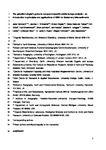The paleolimnologist's guide to compound-specific stable isotope analysis – An introduction to principles and applications of CSIA for Quaternary lake sediments
| dc.contributor.author | Holtvoeth, J | |
| dc.contributor.author | Whiteside, JH | |
| dc.contributor.author | Engels, S | |
| dc.contributor.author | Freitas, FS | |
| dc.contributor.author | Grice, K | |
| dc.contributor.author | Greenwood, P | |
| dc.contributor.author | Johnson, S | |
| dc.contributor.author | Kendall, I | |
| dc.contributor.author | Lengger, Sabine | |
| dc.contributor.author | Lücke, A | |
| dc.contributor.author | Mayr, C | |
| dc.contributor.author | Naafs, BDA | |
| dc.contributor.author | Rohrssen, M | |
| dc.contributor.author | Sepúlveda, J | |
| dc.date.accessioned | 2019-03-05T10:10:20Z | |
| dc.date.issued | 2019-03-01 | |
| dc.identifier.issn | 0277-3791 | |
| dc.identifier.issn | 1873-457X | |
| dc.identifier.uri | http://hdl.handle.net/10026.1/13409 | |
| dc.description | Publisher’s embargo period: Embargo set on 11.03.2019 by SR (TIS). | |
| dc.description.abstract |
the stable isotope composition of key chemical elements for life on Earth (e.g., carbon, hydrogen, nitrogen, oxygen, sulfur) tracks changes in fluxes and turnover of these elements in the biogeosphere. Over the past 15–20 years, the potential to measure these isotopic compositions for individual, source-specific organic molecules (biomarkers) and to link them to a range of environmental conditions and processes has been unlocked and amplified by increasingly sensitive, affordable and wide-spread analytical technology. Paleoenvironmental research has seen enormous step-changes in our understanding of past ecosystem dynamics. Vital to these paradigm shifts is the need for well-constrained modern and recent analogues. Through increased understanding of these environments and their biological pathways we can successfully unravel past climatic changes and associated ecosystem adaption. With this review, we aim to introduce scientists working in the field of Quaternary paleolimnology to the tools that compound-specific isotope analysis (CSIA) provides for the gain of information on biogeochemical conditions in ancient environments. We provide information on fundamental principles and applications of novel and established CSIA applications based on the carbon, hydrogen, nitrogen, oxygen and sulfur isotopic composition of biomarkers. While biosynthesis, sources and associated isotope fractionation patterns of compounds such as n-alkanes are relatively well-constrained, new applications emerge from the increasing use of functionalized alkyl lipids, steroids, hopanoids, isoprenoids, GDGTs, pigments or cellulose. Biosynthesis and fractionation are not always fully understood. However, although analytical challenges remain, the future potential of deeper insights into ecosystem dynamics from the study of these compounds is also emerging. | |
| dc.format.extent | 101-133 | |
| dc.language | en | |
| dc.language.iso | en | |
| dc.publisher | Elsevier | |
| dc.rights | Attribution-NonCommercial-NoDerivatives 4.0 International | |
| dc.rights | Attribution-NonCommercial-NoDerivatives 4.0 International | |
| dc.rights | Attribution-NonCommercial-NoDerivatives 4.0 International | |
| dc.rights.uri | http://creativecommons.org/licenses/by-nc-nd/4.0/ | |
| dc.rights.uri | http://creativecommons.org/licenses/by-nc-nd/4.0/ | |
| dc.rights.uri | http://creativecommons.org/licenses/by-nc-nd/4.0/ | |
| dc.subject | Stable isotopes | |
| dc.subject | Global | |
| dc.subject | Paleoclimatology | |
| dc.title | The paleolimnologist's guide to compound-specific stable isotope analysis – An introduction to principles and applications of CSIA for Quaternary lake sediments | |
| dc.type | journal-article | |
| dc.type | Journal Article | |
| plymouth.author-url | https://www.webofscience.com/api/gateway?GWVersion=2&SrcApp=PARTNER_APP&SrcAuth=LinksAMR&KeyUT=WOS:000461264600007&DestLinkType=FullRecord&DestApp=ALL_WOS&UsrCustomerID=11bb513d99f797142bcfeffcc58ea008 | |
| plymouth.volume | 207 | |
| plymouth.publication-status | Published | |
| plymouth.journal | Quaternary Science Reviews | |
| dc.identifier.doi | 10.1016/j.quascirev.2019.01.001 | |
| plymouth.organisational-group | /Plymouth | |
| plymouth.organisational-group | /Plymouth/Faculty of Science and Engineering | |
| plymouth.organisational-group | /Plymouth/REF 2021 Researchers by UoA | |
| plymouth.organisational-group | /Plymouth/REF 2021 Researchers by UoA/UoA07 Earth Systems and Environmental Sciences | |
| dcterms.dateAccepted | 2019-01-02 | |
| dc.rights.embargodate | 2020-2-8 | |
| dc.identifier.eissn | 1873-457X | |
| dc.rights.embargoperiod | Not known | |
| rioxxterms.versionofrecord | 10.1016/j.quascirev.2019.01.001 | |
| rioxxterms.licenseref.uri | http://creativecommons.org/licenses/by-nc-nd/4.0/ | |
| rioxxterms.licenseref.startdate | 2019-03-01 | |
| rioxxterms.type | Journal Article/Review |



